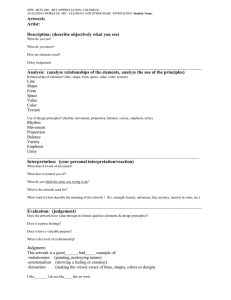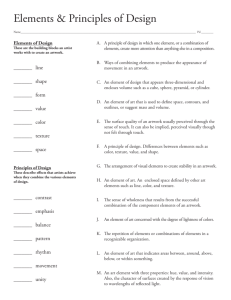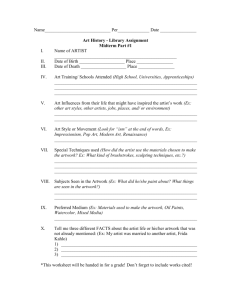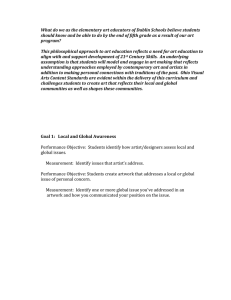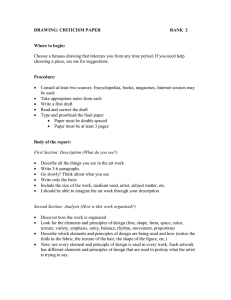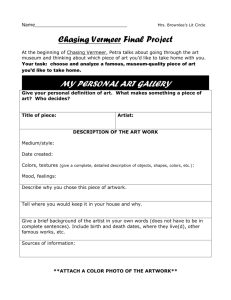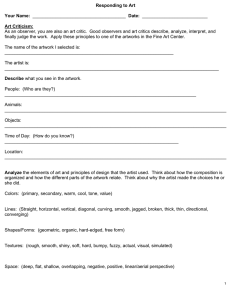Four levels of formal analysis
advertisement
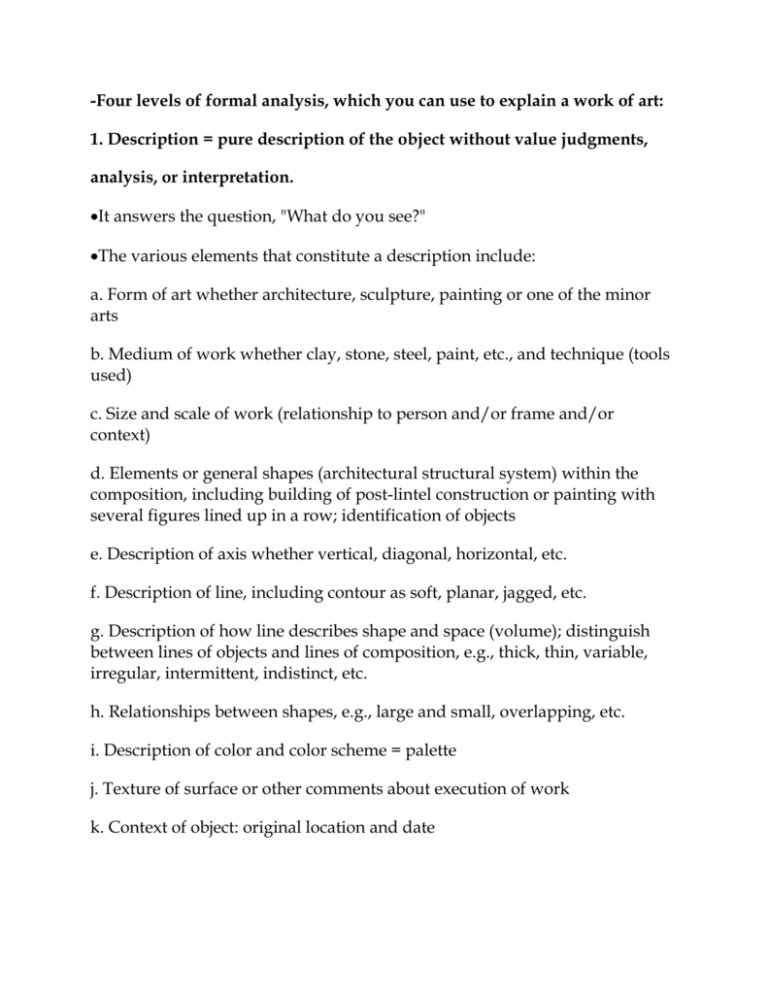
-Four levels of formal analysis, which you can use to explain a work of art: 1. Description = pure description of the object without value judgments, analysis, or interpretation. It answers the question, "What do you see?" The various elements that constitute a description include: a. Form of art whether architecture, sculpture, painting or one of the minor arts b. Medium of work whether clay, stone, steel, paint, etc., and technique (tools used) c. Size and scale of work (relationship to person and/or frame and/or context) d. Elements or general shapes (architectural structural system) within the composition, including building of post-lintel construction or painting with several figures lined up in a row; identification of objects e. Description of axis whether vertical, diagonal, horizontal, etc. f. Description of line, including contour as soft, planar, jagged, etc. g. Description of how line describes shape and space (volume); distinguish between lines of objects and lines of composition, e.g., thick, thin, variable, irregular, intermittent, indistinct, etc. h. Relationships between shapes, e.g., large and small, overlapping, etc. i. Description of color and color scheme = palette j. Texture of surface or other comments about execution of work k. Context of object: original location and date 2. Analysis = determining what the features suggest and deciding why the artist used such features to convey specific ideas. It answers the question, "How did the artist do it?" The various elements that constitute analysis include: a. Determination of subject matter through naming iconographic elements, e.g., historical event, allegory, mythology, etc. b. Selection of most distinctive features or characteristics whether line, shape, color, texture, etc. c. Analysis of the principles of design or composition, e.g., stable, repetitious, rhythmic, unified, symmetrical, harmonious, geometric, varied, chaotic, horizontal or vertically oriented, etc. d. Discussion of how elements or structural system contribute to appearance of image or function e. Analysis of use of light and role of color, e.g., contrasty, shadowy, illogical, warm, cool, symbolic, etc. f. Treatment of space and landscape, both real and illusionary (including use of perspective), e.g., compact, deep, shallow, naturalistic, random g. Portrayal of movement and how it is achieved h. Effect of particular medium(s) used i. Your perceptions of balance, proportion and scale (relationships of each part of the composition to the whole and to each other part) and your emotional j. Reaction to object or monument 3. Interpretation = establishing the broader context for this type of art. It answers the question, "Why did the artist create it and what does it mean The various elements that constitute interpretation include: a. Main idea, overall meaning of the work. b. Interpretive Statement: Can I express what I think the artwork is about in one sentence? c. Evidence: What evidence inside or outside the artwork supports my interpretation? 4. Judgment: Judging a piece of work means giving it rank in relation to other works and of course considering a very important aspect of the visual arts; its originality. Is it a good artwork? Criteria: What criteria do I think are most appropriate for judging the artwork? Evidence: What evidence inside or outside the artwork relates to each criterion? Judgment: Based on the criteria and evidence, what is my judgment about the quality of the artwork?
